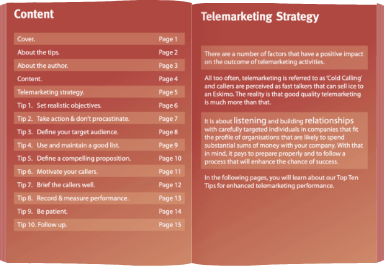In the dynamic world of sales, where success hinges on building relationships and closing deals, the question of how long to pursue sales prospects before giving up is a common dilemma. While persistence is often lauded as a vital trait for sales professionals, it is crucial to strike a balance between determination and practicality. In this blog, we will explore the factors that influence the duration of your pursuit and provide insights into when it might be time to reevaluate your efforts.
Understanding your Sales Cycle
To determine the appropriate timeframe for chasing sales prospects, it’s essential to recognise the typical sales cycle for your industry. Different products or services require varying degrees of consideration and decision-making. If yours is an established business, you’ll probably know this already. If not, research and analyse your target market to identify the average length of the sales cycle and adjust your expectations accordingly. Recognising the stages a prospect moves through, from initial contact to final conversion, will help you gauge the progress and adapt your approach as needed.
Assessing Engagement and Interest
One key indicator of a prospect’s potential is their level of engagement and interest. Sometimes you get a gut feel from the get-go. Other times, it’s not so clear. Regularly evaluate their responsiveness to your communication, their willingness to schedule meetings or demonstrations, and their involvement in the decision-making process. If a prospect consistently displays disinterest or fails to engage after multiple attempts, it may be a sign that your efforts would be better directed elsewhere. But, that’s also dependent on the point below regarding the potential value of sale.
Measuring Return on Investment
Time is a valuable resource, and as a sales professional, you must evaluate the return on investment (ROI) of your efforts. Consider the amount of time and resources you have invested in pursuing a particular prospect. If the cost outweighs the potential benefits, it might be prudent to redirect your focus toward more promising leads. Remember, successful salespeople know how to prioritise their efforts for maximum efficiency. Yet, with account-based marketing, organisations may focus on a more limited number of leads that have the potential to convert at high value. In those cases, it’s perhaps sensible to keep going until there is a clear outcome.
Building Relationships and Nurturing Leads
In sales, building relationships is vital. It takes time and effort to establish trust, demonstrate value, and address the specific needs of prospects. By nurturing leads and maintaining regular communication, you can deepen the connection and understand their evolving requirements. However, there may come a point where your efforts yield diminishing returns. Be attentive to any signs that suggest the prospect is no longer interested or has shifted their priorities.
Knowing When to Pivot
Sometimes, despite your best efforts, a prospect simply isn’t the right fit or doesn’t align with your product or service. The wrong timing, and/or priorities that are elsewhere, can mean that things just don’t work out. If prospective customers have existing solutions, whether that’s in-house management or external incumbent suppliers, they may just not be ready. Recognising when to pivot and redirect your attention is crucial. It’s better to reallocate your time and resources toward prospects with a higher probability of conversion than to continue chasing leads that are unlikely to yield results. Remember, it’s not a sign of failure to let go; it’s a sign of adaptability and focus.
How Much Time Does it Take?
With marketing automation, much of today’s heavy-lifting has been removed from time-poor salespeople. If prospects see periodic emails and newsletters, receive invitations to webinars or events, and they’re potentially seeing content posted on social platforms, that’s all part of the engagement and nurturing process. Let’s also not forget that fresh prospecting takes time too. So, how much time does your sales team actually devote to following up on a regular or periodic basis. If it’s a phone or personal email call from time to time, that’s hardly onerous if the prize is valuable.
Conclusion
As you might expect, there is no right or wrong. The pursuit of sales prospects requires a delicate balance between persistence and practicality. It’s also about understanding what tasks are down to the marketing team, and what falls into the remit of the sales team. By understanding your industry’s sales cycle, assessing engagement levels, measuring ROI, nurturing relationships, and knowing when to pivot, you can make informed decisions about the duration of your pursuit. Remember, while persistence is essential, it is equally important to recognise when it is time to move on. By striking this balance, you can optimise your time and resources, increase your chances of success, and achieve sustainable growth in your sales endeavours.






